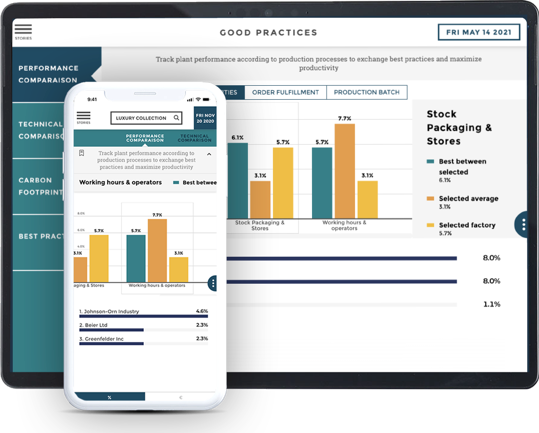Marketing reports are an inevitable part of running a marketing agency. And as crucial as they are, very few people can actually say that they enjoy creating reports. It can take hours at a time and in many cases, your clients can barely understand the reports and the data you’re sending them.
However, marketing reports have come a long way from PowerPoint presentations and Excel sheets. Today, there are countless tips and different ways to create the kind of reports your clients not only understand but also love opening and reading every week or month.
Break down your performance by channel
A recent study on how clients feel about the reports they get from agencies shows that 42% of the surveyed clients said that they are unhappy with the reports that they get. The reasons are many, but the first one is actually easy to solve.
Most clients want to see their marketing performance broken down by channel. For example, if you do social media marketing, split up your report into sections according to the different platforms that you manage. Each section should have specific KPIs and performance results for that channel.
At the very end, it’s a great idea to give a high-level overview of your most important KPIs as a summary. Different people read marketing reports, and top-level management will only care about the top-level performance and not the granular channel updates.
Offer real-time reports
Clients can be tough to handle if they have high expectations and a strong urge to control your work. However, that doesn’t necessarily have to be a bad thing for you. Back in the day, if a client wanted to check their campaigns were going, they could either:
- Reach out to your agency and ask
- Go to their social media channels and check the performance
Neither is ideal, but there is a neat solution.
Modern reporting tools offer real-time dashboards that clients can just click at any time and get access to their data. Whether it’s midnight on a Friday or 8AM on a Monday, they can see what kind of work you’re delivering and watch as the numbers change in front of their eyes.
All they need is access to the real-time report link, and you can rest easy knowing that you can do the work uninterrupted. This also saves you from sending out reports at certain intervals, as the reports are always available in the same place.
.webp?width=600&name=illus-usp-2%20(3).webp)
Charge for your reports - but not too much
Creating reports takes time, even when you use reporting software. And when you use a reporting tool, it has certain monthly costs too, sometimes going into hundreds of dollars. The good news is, clients actually expect to pay extra for reports, and they’re willing to spend a few bucks on reports.
How much - it really depends on a specific client. However, our results show that 51% of clients would be willing to spend up to $50 per report, and 37% would pay up to $100 per report.
This is good news because you can actually offset the costs of your reporting, on the one hand. On the other hand, you can actually make a better impression with your clients because they’ll be perceiving the report as something valuable.
Use a reporting tool
About a decade ago, if you ran a marketing agency, it meant delivering results in the form of emails, sheets and presentations. And if you live in 2012, that’s just fine. But in this day and age, there are far more sophisticated ways to create marketing reports.
A marketing reporting tool automates the most boring parts of report creation. For one, it lets you create reports online in the form of website pages that clients can access any time and on any device.
Another important aspect is automated delivery. Most clients expect a marketing report at a certain interval, be it weekly, monthly or quarterly. Reporting tools allow you to set a schedule when you want the reports to be delivered. Once a week or once a quarter - all you have to do is set it up once.
From the point of view of the agency, there are plenty of reasons to use a reporting tool. Lots of data integrations, report templates, customization options, and much more.
But perhaps the most convincing aspect of using reporting tools instead of manually writing a report is the time saved. The average agency spends up to 10 hours each week on reporting, which can easily turn into hundreds of hours for agencies with a large number of clients.
Wrapping up
Client reporting is no longer the thing that your account managers will hate. It’s also now an experience that your clients will find a lot more fulfilling, thanks to a host of modern reporting tools and new ways to deliver results that move the needle.
Witten by Mile Zivkovic, Head of Content at Whatagraph, a leading marketing reporting tool for agencies and marketing teams.





